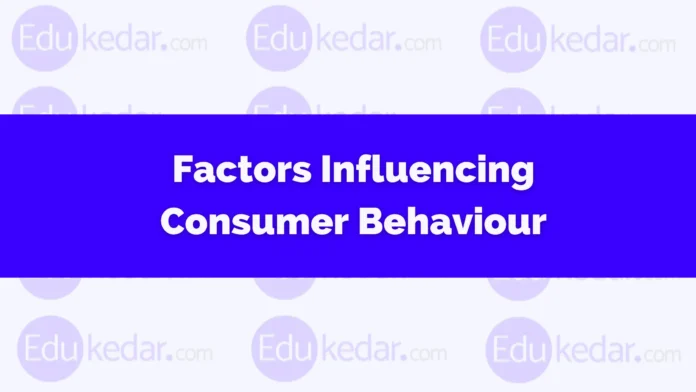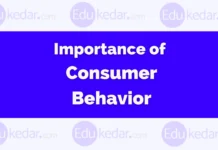Understanding and leveraging factors influencing Consumer Behaviour enables businesses to tailor their marketing strategies effectively, resonating with their target audience and driving consumer engagement and loyalty.
Factors Influencing Consumer Behaviour
Consumer behavior is influenced by a myriad of factors, which can be broadly categorized into four main groups: cultural, social, personal, and psychological factors.
Here’s a breakdown of each:
- Cultural Factors
- Social Factors
- Personal Factors
- Psychological Factors
Cultural Factors
- Culture
- Subculture
- Social Class
Culture
Cultural values, beliefs, customs, and norms shape consumer behavior significantly. These include factors like language, religion, values, rituals, and preferences.
Subculture
Within a larger culture, there are often smaller subcultures with their own distinct norms and values. These can include ethnic, regional, or religious subcultures.
Social Class
Social class influences purchasing behavior by defining a person’s position in society and their associated behaviors, preferences, and consumption patterns.
Example of Cultural Factors of Consumer Behaviour
In Japan, the cultural value of gift-giving is deeply ingrained, leading to a thriving market for beautifully packaged, high-quality gifts for various occasions.
Social Factors
- Reference Groups
- Family
- Roles and Status
Reference Groups
These are groups that individuals use as a reference point to form attitudes, behaviors, and values. Reference groups can include family, friends, peers, coworkers, or celebrities.
Family
Family structure, roles, and dynamics significantly influence consumer behavior, as families often make joint decisions about purchases and transmit values and preferences to their members.
Roles and Status
An individual’s role and status within society can affect their consumption patterns. For example, a person’s role as a parent, student, or professional can influence their needs and preferences.
Example of Social Factors of Consumer Behaviour
Teenagers often adopt the fashion styles of celebrities or influencers they admire, leading to increased sales of clothing brands endorsed by these figures.
Personal Factors
- Age and Life Stage
- Occupation
- Lifestyle and Personality
Age and Life Stage
Different age groups have distinct needs, preferences, and purchasing behaviors. Life stage (e.g., single, married, retired) also impacts consumption patterns.
Occupation
A person’s occupation and income level affect their purchasing power and the types of products and services they can afford.
Lifestyle and Personality
Consumer lifestyle and personality traits influence product choices. Some consumers may prefer adventurous experiences, while others prioritize safety and comfort.
Example of Personal Factors of Consumer Behaviour
Young adults transitioning to college life may prioritize budget-friendly and convenient meal options, leading to increased sales of instant noodles and microwaveable meals.
Psychological Factors
- Perception
- Motivation
- Attitudes and Beliefs
- Learning and Memory
Perception
How consumers perceive products and brands influences their purchasing decisions. Factors such as packaging, branding, and advertising play a crucial role in shaping perceptions.
Motivation
Consumer needs and desires drive purchasing behavior. Understanding what motivates consumers to buy particular products or services is essential for marketers.
Attitudes and Beliefs
Consumer attitudes and beliefs, which are shaped by experiences, culture, and social influences, impact their decision-making process.
Learning and Memory
Consumers learn from past experiences and memories, which can influence their future purchasing behavior. Marketers use techniques such as repetition and reinforcement to shape consumer learning.
Example of Psychological Factors of Consumer Behaviour
Consumers perceive organic food products as healthier and more environmentally friendly, influencing their purchasing decisions despite higher prices.





